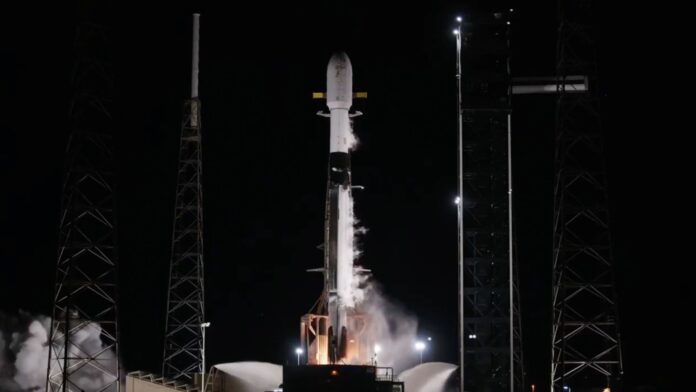SpaceX continues to rapidly expand its Starlink internet service, launching another 29 satellites into orbit on Tuesday, November 18th, from Cape Canaveral, Florida. This mission marks a significant milestone, with the reusable Falcon 9 booster (designated 1085) achieving its 12th successful launch and ocean landing.
Expanding Global Coverage
The latest batch of Starlink satellites will contribute to the growing network, which now exceeds 9,000 operational spacecraft, according to satellite tracker Jonathan McDowell. The addition pushes the total number of operational Starlink satellites to 9,000, enhancing global coverage and internet access in remote areas.
Reusable Rocket Technology
The Falcon 9 rocket’s first stage successfully landed on SpaceX’s drone ship, “A Shortfall of Gravitas,” approximately 8.5 minutes after liftoff. This reusable rocket technology dramatically lowers the cost of space launches, making frequent deployments like these economically viable. The booster’s 12th successful landing highlights the durability and reliability of SpaceX’s design.
Record-Breaking Launch Pace
As of 2024, SpaceX has conducted 148 Falcon 9 missions, with over 70% dedicated to building out the Starlink constellation. This unprecedented launch pace demonstrates the company’s commitment to deploying a global internet network via satellite. The sheer volume of launches is reshaping the space industry, making satellite internet a mainstream service.
Implications for Global Connectivity
The rapid expansion of Starlink is poised to reshape internet access in underserved regions, offering high-speed connectivity where traditional infrastructure is limited. This has implications for education, business, and disaster relief, particularly in remote or disaster-stricken areas. The growth of Starlink also raises questions about orbital congestion and the long-term sustainability of large satellite constellations.
The launch underscores SpaceX’s dominance in the commercial space sector and its ongoing commitment to revolutionizing global connectivity. The rapid deployment of Starlink satellites continues to reshape the landscape of internet access, pushing the boundaries of what is possible in space-based communications




























